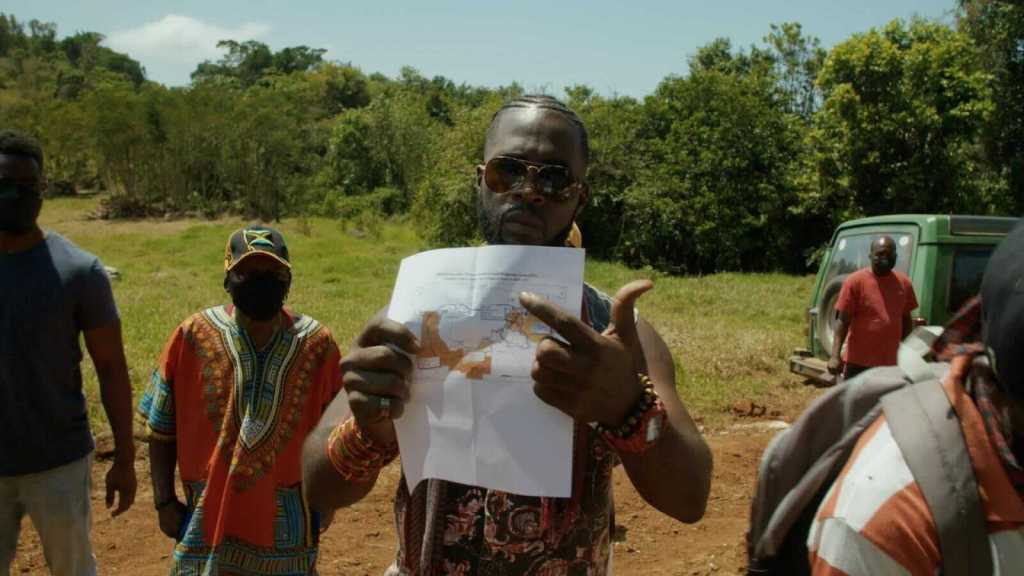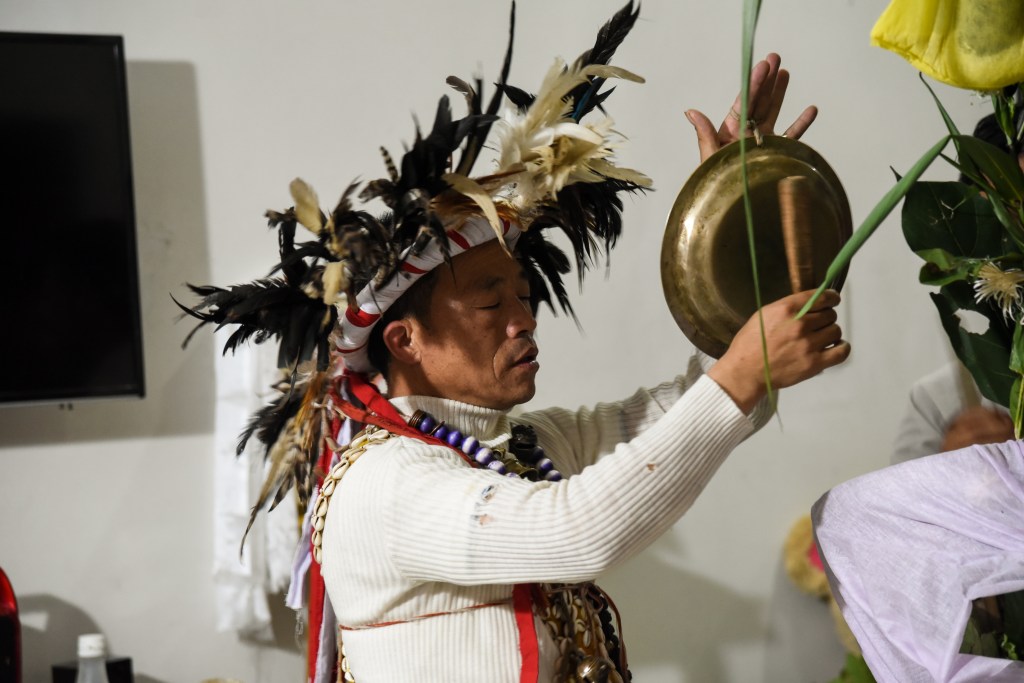Bia Saldanha has an unusual commute to work. First she crosses the Acre river by boat, surrounded by the green of the Amazon in northwestern Brazil. Then she takes a brisk hike up from the river bed for her monthly meeting with a community of rubber tappers, referred to as seringueros in Portuguese—or as she likes to call them, “guardians of the forest.”
This summer, though, it was a difficult commute. Choking skies, laden with ash and smoke from the 7,000 square miles of forest burning in the Amazon, spanning not just Brazil but into neighboring Bolivia and Peru as well, made it hard for Saldanha to leave her home some days. “You just cannot breathe outside,” she said. “But it has sadly become a part of our lives now.”
Videos by VICE
Saldanha’s work with rubber tappers is a way of combating the fires of the future—she hopes that if people in the Amazon have a sustainable way to make a living, they won’t turn to the economic practices that have devastated the forest and made the region vulnerable to fires.
In the last 45 years, an estimated 700,000 square kilometers, or 20 percent of Brazil’s Amazon forest, has been cleared, according to the Yale School of Forestry and Environmental Sciences, much of it in order to create pasture for cattle grazing. (Brazil is the largest exporter of beef in the world.)
As trees and rainforest life has been removed to make way for herds of cows and for soy, a crop used primarily for livestock feed, the risk of fires has increased, said Glenn Horowitz, the director of Mighty Earth, a DC-based nonprofit tracking deforestation. “The fires we are seeing are connected to irresponsible agricultural expansion,” he said. “President [Jair] Bolsonaro’s weakening of environmental protection and his encouragement for agribusiness to destroy the forest and occupy Indigenous lands has been a big part of the story.”
Saldanha has been slowly building a model for an economic alternative in the same region, in the form of offering communities in the rainforest a way to make a living that doesn’t involve cattle and soy farming, logging, or any other industry linked to deforestation.
People, here, she says, need to make money, and sadly the market has not been paying as much for what the forest produces naturally—native rubber, cocoa, nuts, medicinal herbs—compared to beef, soy, and wood.

Harvesting rubber is arduous work, requiring the seringueros to traverse a swath of the forest for five to six hours every day. Most tappers start at 5 in the morning, going from rubber tree to rubber tree making incisions on the bark, which unleashes a milky white liquid: latex, the key building block of rubber, which is collected by small buckets placed under the cuts. This process doesn’t cause harm; if done correctly, one tree can continue to give latex for decades.
Though rubber trees are indigenous to South America, the vast majority of rubber plantations today are in Asia. These plantations have endless rows of rubber trees that are milked for their latex and then cut down after 25 or 30 years, when they no longer produce rubber. (In the wild, these trees can live for more than a century.) While these plantations can be managed in a sustainable manner, this method of rubber harvesting relies on deforestation and a monocrop that doesn’t support forest ecosystem like the Amazon. These man-made rubber forests therefore often come at the expense of the natural habitats they replace.
“The wild rubber tappers harvest is a great example of how the rainforest can provide benefits way beyond even what it does for wildlife and the climate,” Horowitz said. “Getting rubber from a wild rubber tree is so much better than destroying the rainforest to plant a monoculture plantation.”
In 1997, Saldanha moved from Rio de Janeiro, where she ran a successful fashion business, making bags and accessories out of rubber from the Amazon, to be closer to the source. At the time, the market for wild rubber was fundamentally broken in Brazil, she said. Buyers were not paying fair prices for the rubber, most companies had turned to the cheaper supply available from rubber plantations, and the tappers had abandoned the trade.
“The market was not open in those days for ecological products, as it is nowadays. It was a slow journey to build the model we have now,” she explained, seated at her home, about three hours from the edge of the Amazon forest in the Brazilian state of Acre.
In 2007, she met Sebastien Kopp and François Ghislain Morillion, two young Frenchmen who had been building a supply chain for their shoe brand, Veja, in Brazil. Their aim was to procure as many elements of the shoe—the lining, the fabrics, the soles—from within the country. Though they had established organic cotton supply chains in northeast Brazil, they were struggling to find the right partners in the Amazon to get the wild rubber for the soles.
To meet Veja’s demand for five tons of rubber, Saldanha established the first partnership with a rubber tapper community in the Chico Mendes Extractive Reserve in Assis Brasil, which sits at the cross section of Brazil, Peru, and Bolivia.
Locals were hesitant, she recalled, but the rubber tappers said they would consider exploring the trees again for the coveted milky liquid if they received more money. Saldanha and Veja agreed to pay 80 percent above the market rate, and give the tappers money upon delivery of the rubber—an important detail, since the tappers were often paid weeks or months after the fact by other buyers. Contracts were also made with rubber associations to ensure that the company would keep buying their products for months, if not years, to come.
Slowly, Saldanha said, these rubber tappers began to trust her. “It wasn’t easy and it took time, but from the beginning we were professionals and we always paid on time, and it showed that they could make money selling rubber again.”
Twelve years later, Veja now uses about 340 tons of natural rubber annually and works with ten groups of rubber tappers in eight municipalities to get it. (Since the 90s Veja has become more popular; last year Meghan Markle wore a pair of their sneakers.)
Cattle-raising and soy are still the dominant industries in the Amazon, however. “The standing forest is worth less than the cleared forest,” Saldanha said. “It’s weird.” She wants to continue to change this equation: If rubber tappers can make money from intact trees, and if companies like Veja are relying on their product, there will be more incentive to preserve the forest.
Veja is among a small number of companies that are investing directly in the raw materials of the forest and building a new model for conservation. Starseed sources sachi inchi, a peanut-like seed, from the Peruvian Amazon, to produce nut butters, snacks, and oils. Australian company Loving Earth works with the Asháninka community, an indigenous tribe in the Peruvian Amazon, to source cacao for their chocolate bars, which are now sold in the U.S. While Bay Area-based Guayaki doesn’t procure their yerba mate from the Amazon specifically, it’s a very similar model in the South American rainforest, which spans southern Brazil, Argentina, and Paraguay—by making yerba mate a valuable crop, they hope to keep cattle ranching at bay.
“If the people who live in the forest are well-paid and recognized for their work, they are not going to suffer, be in poverty, and forgotten here trying to save the Amazon. That is a very romantic notion,” Saldanha said. “This is not the reality. The reality is that they need the forest, and we must pay for this in the real cost of this product. We cannot enjoy the riches of the forest and leave them in poverty. That is not fair.”
“We are not just buying rubber. We are also paying for forest conservation,” she added, pointing to a rubber tree. “This tree has been around for over 100 years and is still producing latex. If it is well cared for, it can stay here for another 100 years.”
Supported by the Pulitzer Center on Crisis Reporting.
Esha Chhabra is a freelance journalist and upcoming author with Patagonia Books who writes about global health, environment, and purpose-driven businesses.




